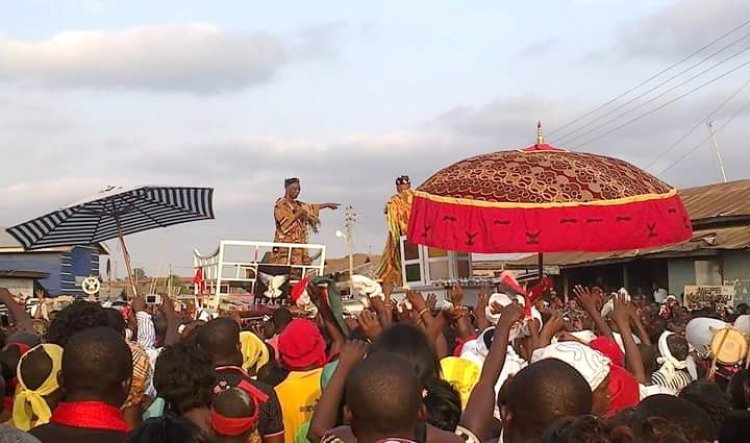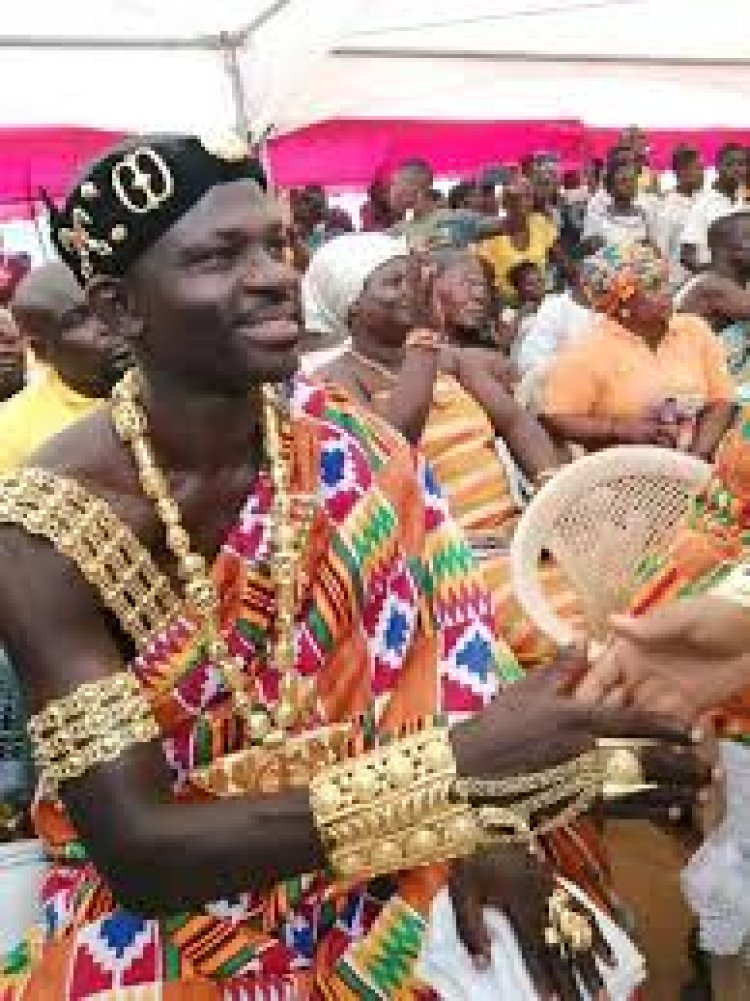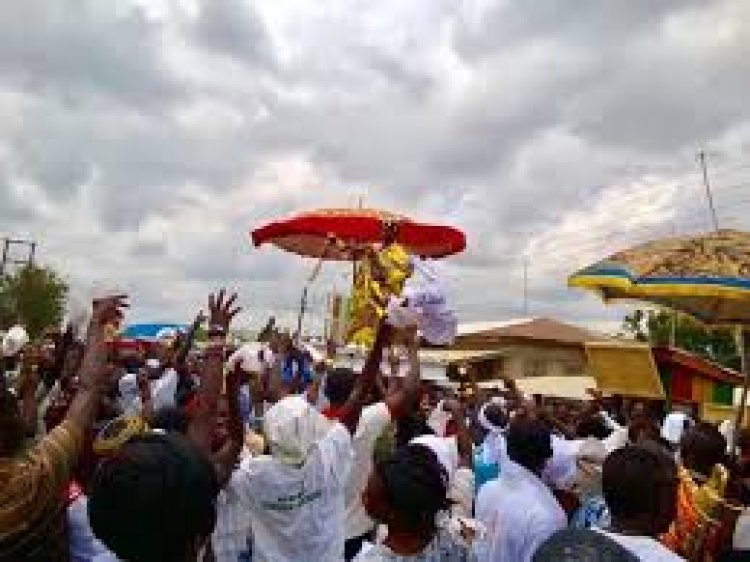Miriam Xorlasi Tordzeagbo is a Ghanaian teacher and beauty queen who is fluent in Ewe and English. She comes from Battor in the North Tongu District of the Volta Region, Ghana.
She lives in Central Tongu District, Volta Region, Ghana, where she works as a teacher and serves as a volunteer for Savana Signatures, a non-governmental organization in the district.
Miriam Xorlasi Tordzeagbo was born in Tongor Kaira, South Dayi District, Volta Region to Tordzeagbo Eugene Yao and Anyadi Yohebeth.
Miriam Xorlasi Tordzeagbo grew up in Battor Dugame, North Tongu District, Volta Region.
She was a student of Battor St. Dominic’s Preparatory school. In 2013, she graduated from Mafi Dove D/A Junior High School in Mafi-Dove, Central Tongu District. In 2016, she graduated from Adidome Senior High School (ADISEC) in Adidome, Central Tongu District.
Miriam Xorlasi Tordzeagbo was Face of Hosco 2017. In 2019, she graduated from the Holy Spirit College of Education in Ho, Ho Municipal District, Volta Region.
Miriam Xorlasi Tordzeagbo was Miss Hogbe of Mafi 2019 and Face of Volta 2020 second runner-up. On December 13, 2021, she joins the Ghana Education Service (GES) as a professional teacher.
She is Miss GNATLASS North Tongu 2021 and Miss GNATLASS Volta 2021 third runner-up.
On August 14, 2022, she competed against 15 other candidates at Miss Ghana 2022 at The Avenue Event Center of Unique Floral Centre in Accra, Ghana and won the title. She was 22 years old when she was crowned Miss Ghana 2022.
Mepe is main town bears the name of the Traditional Area.There are other settlemants in the traditional area like Degome, Nuwloe, Dadome, Fakpoe, Workpoe, Feda, Agortive, Avetakpo, Dzrowode, Vukpo, Adudong, Kedzikorfe, Abung etc.
The traditional area spans the Volta River, but Mepe town lies entirely on the Southern bank of the Volta River. Mepe is situated about 100 km east of Accra. and is accessible by a bitumen road from Accra.
The people of Mepe migrated from Egypt to their present location. They passed through the Nubian Empire of Ethiopia and Western Sudan. The were in the group of Ewes (known as Gaviwo), Yorubas, Fons, and Gas who settled at Ille Ife in Nigeria.
They later moved from Notsie to their current location along the River Volta. They are members of the Awazorli group who traced their lineage to the shrine keeper of the Ewe war deity Dzohor. They separated from their brothers or kinsmen during a war Hodzo forest.
There are five clans in Mepe; which are
Dzagbaku (Dzai baku ("leave one" in Twi)), Adzigo (Dzoxornu), Sevie, Gbanvie and Akorvi.
Dzagbakus trace their sojourn through Ille Ife to Notsie, Tema-Glime and finally to Mepe.
The Adzigos trace theirs from Ketu in Benin through Notsie in Togo, Agoe Adzigo to Mepe. They were joined by a small group from Asiakwa in Akim Abuakwa led by Togbe Dapaah to form the current clan.
The Sevie were part of the Ewe group which left Notsie but later settled at Tsevie before moving to Mepe.
The Gbanvie were also in the Ewe Group which left Notsie and later settled at Mepe. They were later joined by a small Ga group from Sempe in Ga Mashie led by Nii Adotey Obuor.
The Akorvie (which is a corruption of Akwamu fie) were an Akwamu group which trekked from Mampong in Ashanti and settled at Nyanao Hills before moving to Adume (now Adomi). They later moved with canoe to settle at Mepe.The population of the Mepe Traditional Area is estimated at 150, 000.
A BRIEF HISTORY OF AFENORTO FESTIVAL
Afenorto Festival–meaning “Period of Rest at Home” Festival– is the traditional festival of the Chiefs and people of Mepe Traditional Area. It is celebrated annually to renew the sense of oneness of the people.
It thus provides a unique opportunity for reunions, particularly bondage with the extended family and ancestors.n 1874, General Sir Garnet Wolseley moved against the armies of the ambitious Ashanti Kingdom who were attacking the coastal tribes of the Gold Coast: the “Sagrenti War” (i.e. Sir Garnet War) as it came to be known.
Frightened by the magnitude of their forces, the Anlos chose to align with the Ashanti.
The gallant soldiers of Mepe, on the other hand, fought alongside the British colonial army for the freedom of the people of the coastline, an alliance that won most of the battles.
By this exceptional valor, Anlos gave Mepe the accolade “Mepe kukuruku, tsagblatsa, nekotsoe be yewoe bi dzo wu xe” – literally meaning “kernel shells (i.e. Mepe) had proven that they could produce superior quality fire compared to that which baphia nitidia (i.e. Ashanti/Anlo coalition) could”. Baphia nitidia is a prickly tough wood well known for its burning prowess.
Mepe celebrated its battle victories by dancing to tunes of “Agbekor” war drums. This became an established tradition, with our forefathers setting a day aside (at the end of July) for the annual commemorations of what came to be known as “Agbekortu”.
The period was chosen to deliberately overlap the recurrent floods caused by the yearly overspill of the Volta River. During this time, most economic activities (particularly, clam picking, fishing and farming) along the banks of the river came to a standstill.
So, all citizens returned home (to Mepe) on a forced occupational holiday. “Apekpoe” (family and clan meetings) were convened to resolve differences, build bridges, and deliberate on issues of welfare, marriage and so on.
Nevertheless, there was a sudden turn of events in 1918 when an unprecedentedly high incidence and morbidity rates of “Kpata” (the great influenza) rocked the area, causing an abrupt interruption to the annual ritual for close to four decades.
A committee set up in 1951 to work on reviving the festival reported three years later the reinstating of the celebrations and recommended among other things that the “Agbekortu” and “Time-out at Home” celebrations be integrated and christened “Afenorto” Festival.
As the dynamism of culture has never been in doubt, so Afenorto underwent some transformations in substance but maintained virtually the same pattern since its outdooring in 1955.
The undying characteristics of Afenorto Festival are as follows: Firing of musketry and sounding of “Atupani” (talking drum), Libation at “Vesime” – a location where twins were traditionally out doored.
A procession of chiefs and people of Mepe Traditional Area to durbar ground amid firing of musketry, drumming and dancing. Chieftaincy and customary regalia are displayed with splendor.
The order en route to durbar ground is as follows: First comes Dzagbaku division dressed in white, followed by the Adzigo clan in green; Sevie follows cladded in yellow; Gbanvie comes next in red. At the rear is Akorvie dressed in assorted colours with the emblem of cockerel embossed.
The grand durbar is held on the first Saturday of August.
The celebrations span a little over a fortnight.
At the grand durbar, the chiefs and queen mothers sit majestically in state with their mace – their symbol of authority.
The paramount chief presents the welcome address to the guest of honor – usually a government official, who in turn gives a speech in apparent response to the paramount chief.
The grand durbar ends in the afternoon with the return of the chiefs in their palanquins to their respective palaces.
The ensuing days are marked by special merry making some of which are targeted at raising fund to support developmental projects in the area. State harvest, regatta, fun beach, and dances are some of the activities.
The town equally places a lot of premium on education and this is evident in the Afenorto programme featuring the annual speech and prize-giving day for all schools in the area.
After the cleansings of ancestral/ritual stools and final observance for the dead, the curtain is officially drawn on the festival.
Non-residents then return to their various places of residence to patiently await the occasion to come around the following year.



















 Freeman Koryekpor
Freeman Koryekpor 

































